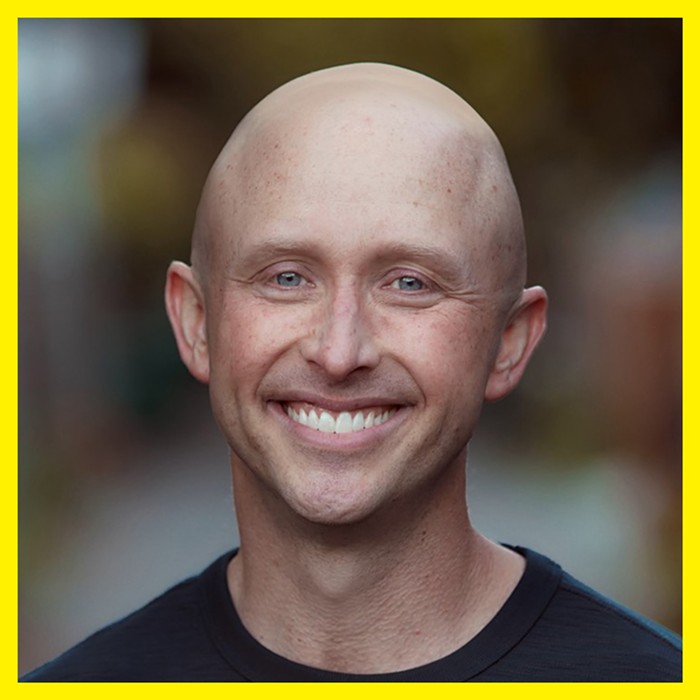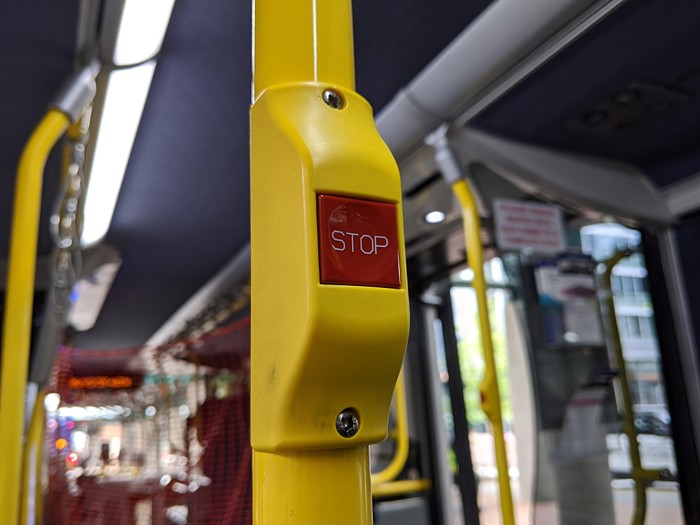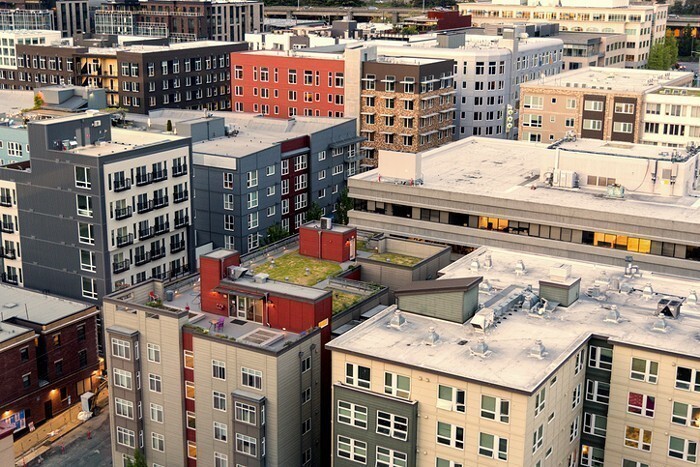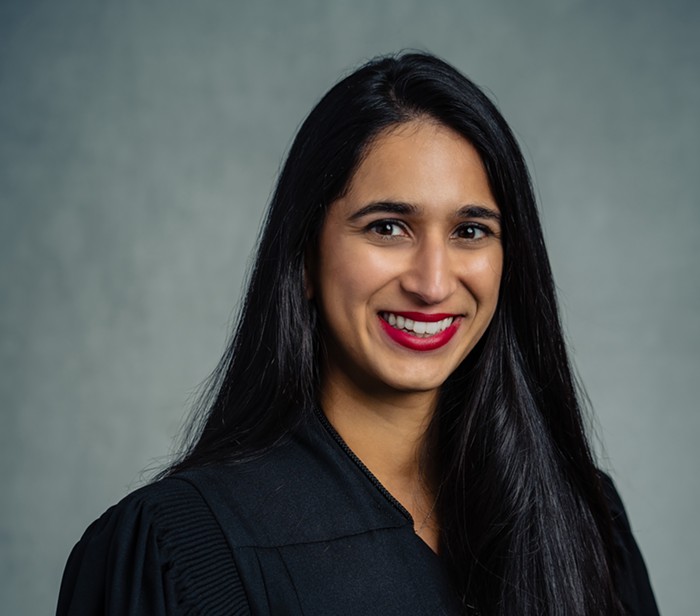
The ledge is a few feet wide.
On Wednesday evening, I hopped a barrier under Freeway Park and walked onto the ledge to visit the person living there.
Used needles littered the ground. Cars and trucks roared by below, past the Seneca Street overpass.
The man under the blue tarp at the end of the ledge lifted the flap for a moment and looked at me, expressionless, with wide eyes. He appeared to be middle-aged. I called out over the din of traffic, introduced myself, and asked if he was safe. If he said anything, I couldn't hear him. He closed the flap.
As I considered what to do next, another man came up from behind, maneuvered past, and stood between me and the tent. If I wanted to interview him or take another photo, he said, I needed to give him some cash.
I sensed that I wasn't wanted. I turned around, walked back, clambered over the barrier, and left.
I noticed the blue tarp last weekend, while driving northbound on I-5. I've seen campers along the freeway before, but on a tiny ledge perched directly above the road?
This morning, after I inquired with the Washington State Department of Transportation, I watched a highway crew clear the campsite. The man was not there.
They knocked his belongings—including a pink suitcase, a faded white pillow, walker, and various tarps—down off the ledge and loaded them into a truck. They left a flyer with a phone number for him to call to retrieve his stuff.

The ledge seems like an especially brave place to set up camp. But this isn't new. In 2014, a man sleeping in an encampment above the freeway—on a considerably thicker ledge—fell to his death.
Hours after I walked onto the ledge on Wednesday night, a man living under the next-north freeway overpass died from a heroin overdose. Naloxone failed to revive him.
Increasing numbers of homeless people are camping along freeways in Los Angeles, too. "The root cause for the rise of the encampments," wrote Los Angeles Times columnist Chris Hawthorne, "most advocates for the homeless agree, is a city that is becoming more expensive and more crowded."

"We're going to work to get the person out of there," Washington State Department of Transportation spokesperson Travis Phelps told me when I sent him photos of the campsite. "Because they're clearly in a hazard situation. As soon as we can."
Another spokesperson said WSDOT has a full schedule, for the next seven weeks, of places where crews will attempt to clear campers along its roadways. But the man in the blue tarp jumped to the top of the queue because of his precariousness.

While I watched the highway crew clear the ledge early this morning, I looked down and noticed another camper, tucked away on an elevated platform above I-5 southbound.

I looked up and back toward the waterfront. I saw two men crouching and injecting, behind bushes at the base of One Union Square. Passersby didn't notice them. Before the crew finished clearing the ledge, a security guard confronted them, and they walked off.

Mayor Ed Murray says sweeping out homeless people who live in the Jungle, the area underneath the freeway to the South, is for the sake of their own safety, citing a double murder that took place in January.
The Jungle has been swept many times before, but people have continually returned to the area.
What the sweep strategy doesn't recognize is that some homeless people choose to live in places that others consider unsafe. (On the opposite side of the barrier I hopped, away from the freeway, there's a tent pitched on an empty corner—it's not clear why the man on the ledge didn't camp there.) Either they have their own affirmative reasons for picking these locations, or they perceive them to be the least-worst options available. They will continue to seek out these spots, circumventing fences as needed, until they are housed.
2,940 people live outside in Seattle, according to the latest One Night Count.
There's clearly nothing to be gained by stigmatizing these residents of our city, unless you want to keep them out of sight, in the shadows, often requiring expensive interventions from first-responders, sometimes dying of overdoses or crime or the cold or being run over in a parking garage. 66 homeless people died outside or by violence in Seattle last year; at least 20 so far this year, according to Women in Black.
People need housing.
People also need safe places to do drugs.
Neither of these things are readily available to poor people in Seattle. It's up to us to provide them. It is that simple.


















